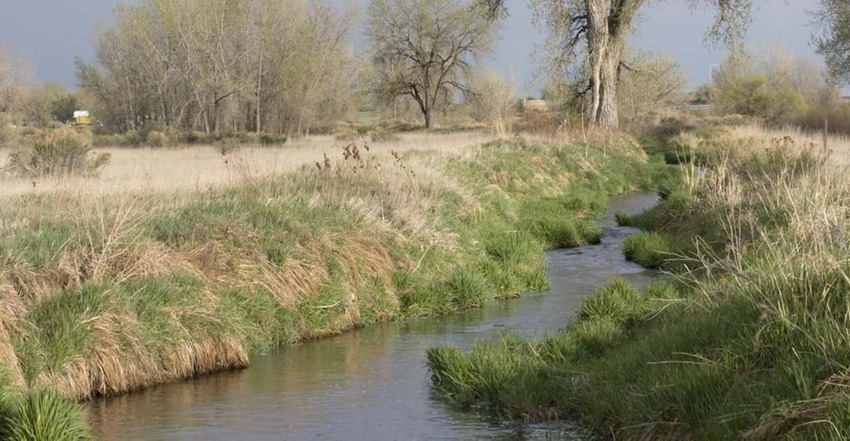
The U.S. Army Corps of Engineers (Corps) and the U.S. Environmental Protection Agency (EPA) have finally published a final rule defining as precisely as possible the scope of waters that are regulated under the Clean Water Act (CWA).
Even with this new definition published on April 21, 2020, a state may include a different and more strict definition of what is a water of the state.
Many organizations in the agricultural community have written stories about EPA developing a new rule to define WOTUS (Waters of the United States). The administration’s new WOTUS rule is already being challenged in the courts.
What is important to farmers is what is, or is not, a water of the U.S.
This blog has reviewed these issues, but hopefully this new regulation will be the definitive word for the next few months until the courts interpret various sections and definitions.
The final rule issued by the two agencies in April includes a thorough background regarding WOTUS, U.S. Supreme Court precedent, and principals and considerations. There are key definitions about what is a ditch, tributary, typical year, and what is a lake and a pond.
A closer look at ditches
The final rule is 93 pages of legalese and “government speak,” but we’ll break it down today and just look at the regulatory status of ditches.
As the rule admits, ditches “…[have] long created confusion for farmers, ranchers, irrigation districts, municipalities, water supply and stormwater management agencies, and the transportation sector, among others.”
Unfortunately the definition of what is or is not a ditch is fraught with disputes.
The key item to remember about WOTUS is that the rule does not include a separate category for ditches. The preamble to the rule states: “Ditches that are constructed in or that relocate a tributary are included in the final rule as tributaries, as long as the ditch satisfies the flow conditions of the ‘tributary’ definition.”
After extensive discussion regarding drainage and irrigation ditches, the agencies limit WOTUS application to ditches to those that “…meet the flow conditions of the tributary definition and are not otherwise excluded.”
The rule goes on to include ditches in the tributary category “…that were constructed in or relocated a tributary and that continue to meet the flow conditions of the tributary definition.”
The agencies also include ditches as a category under WOTUS if they are constructed in a wetland as long as, of course, the wetland meets specific criteria and there are flow conditions of a tributary in the ditch.
And this is a clarification?
The agencies do attempt to keep ditches around cropland and lands using irrigated water to be non-jurisdictional or not under the control of WOTUS.
What about occasional overflow?
Another “cute” practice is discussed regarding ditches that on occasion receive overflow from a perennial river. The Corps has always asserted jurisdiction over the entire ditch no matter its length if it could discern “high water mark” in the ditch. In fact, the rule says regarding ditches receiving river overflow, “…the agencies will continue the existing practice of regulating portions of otherwise non-jurisdictional ditches as waters of the United States based on the ordinary high water mark of the contributing water, but only up to the location of the ordinary high water mark,…”
This means the Corps will only regulate part of the ditch and not the entire reach of the ditch.
If you as a farmer have a wetlands problem, you will need to seek expert counsel on whether or not you have a ditch subject to the CWA.
This final regulation issued in April is certainly a well-intentioned effort to clarify what is or what is not a water of the United States. In many respects, this rule is a major improvement over the jurisdictional grab of land and power by the Obama administration. But, as you can read from this blog, there will be continuing litigation over what is a “ditch”.
The opinions of the author are not necessarily those of Farm Futures or Farm Progress.
About the Author(s)
You May Also Like




